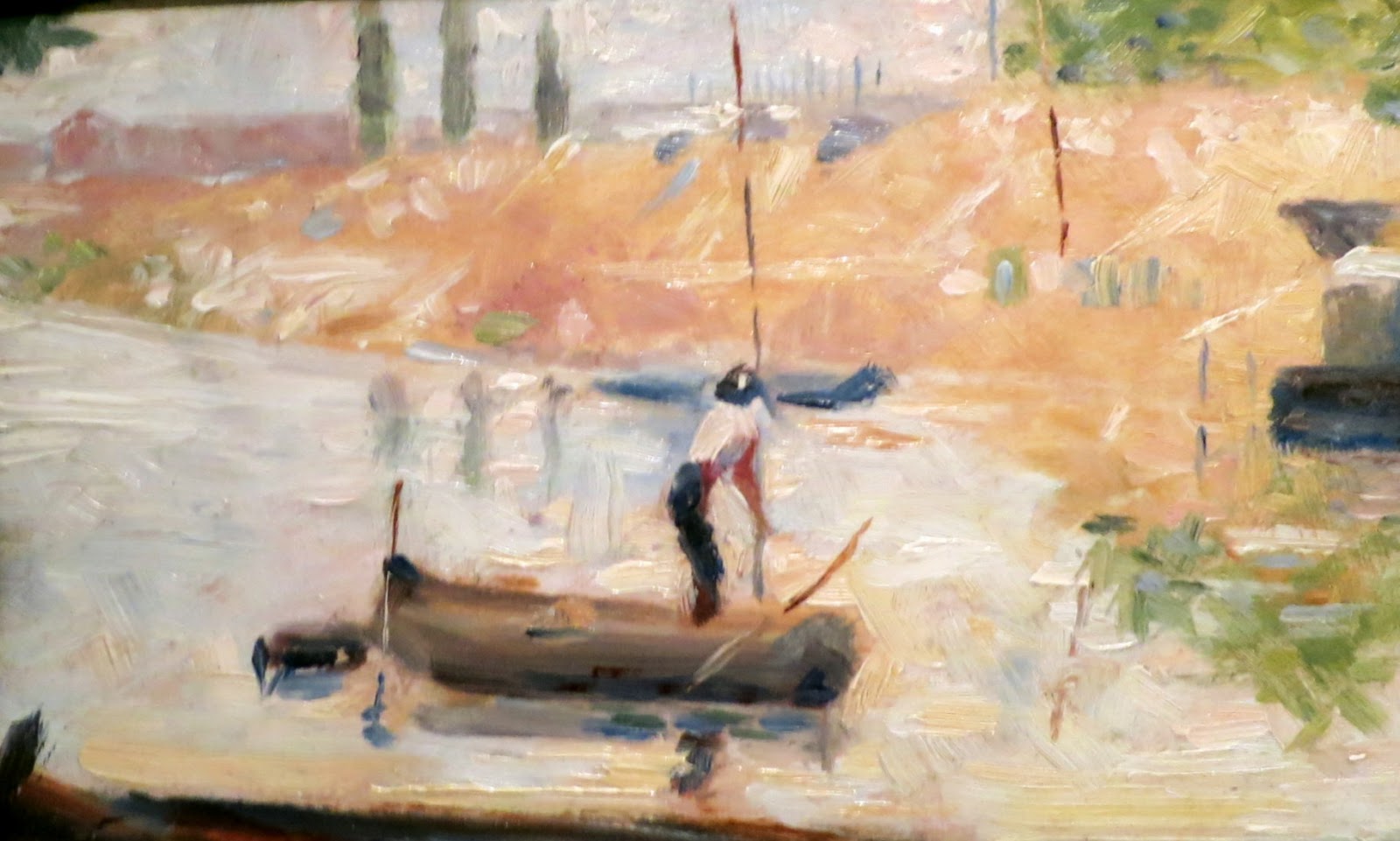Georges Seurat paintings we saw during our 'Impressionist' day in London.
Georges Seurat wanted something more stable than the brush-stroke as used by the Impressionists. Having studied scientific theories of colour analysis and visual perception which showed that colour perception is a matter of interaction, a web of connected events, rather than the simple presentation of one hue after another, Seurat resolved to make this explicit by making his colour patches tiny, reducing them to dots: Pointillism was born. Placed side by side, the dots grew by the million and coalesced into form and in this way he was able to make all the shifts of colour that he needed to. The colours blended in the eye without losing any of their intensity and luminosity.
At the National Gallery:
Le Bec du Hoc, Grandcamp, 1885
Bathers at Asnieres, 1884
Asnieres is a suburb of Paris. On the right is the island of the Grande Jatte (the subject of Seurat's most famous painting) and in the distance, the factories of Clichy. Seurat reworked parts of the picture, such as the hat of the boy on the right, probably in 1886 after he had invented the technique of pointillism. The work is based on numerous preparatory drawings and oil sketches.
At the Courtauld:
Boat by a Riverbank, 1882
Horses in the Water, 1883
Beach at Gravelines, 1890
This was painted a year before the artist's death at the age of 31. It's almost abstract in its simplification. A boat at the centre of the composition marks the horizon. Particles of sand have been found embedded in the paint, suggesting that Seurat painted this in the open air.
Man in a Boat
Young Woman Powdering Herself, 1888-90
This painting is a striking demonstration of Seurat's pointillist technique. The modulation of light and shadow on the wall is achieved with the use of small dots of pure colour juxtaposed in varying concentrations and intensity.
The Bridge at Courbevoie, 1888-87.








No comments:
Post a Comment